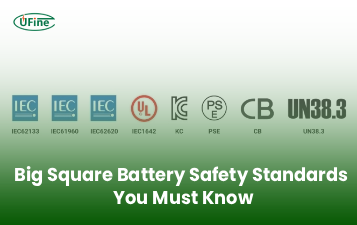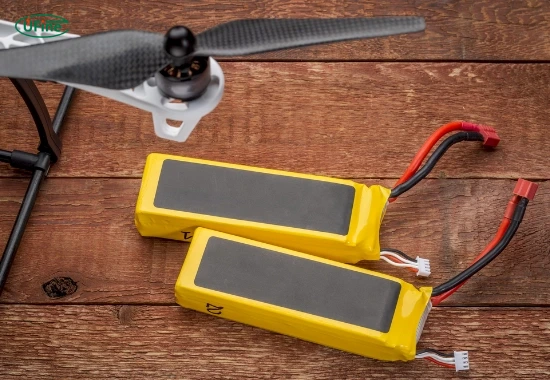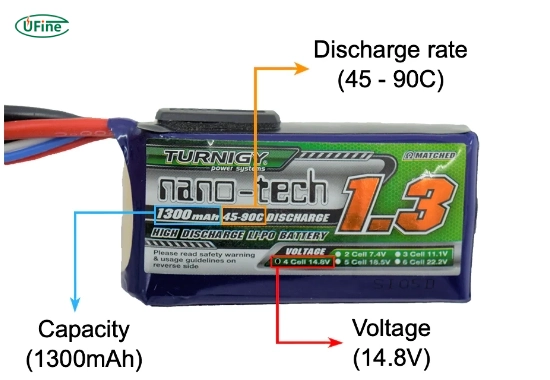
- Part 1. What is a drone lithium polymer battery?
- Part 2. How does a lithium polymer battery work?
- Part 3. What do the specs on a drone lithium polymer battery mean?
- Part 4. What are the different types of drone LiPo battery configurations?
- Part 5. What is the chemistry behind drone lithium polymer batteries?
- Part 6. How to safely charge and store LiPo batteries for drones?
- Part 7. How long do drone lithium polymer batteries last?
- Part 8. What are common problems with drone LiPo batteries?
- Part 9. How to choose the best LiPo battery for your drone?
- Part 10. Are LiPo batteries better than other types for drones?
- Part 11. FAQs about drone lithium polymer batteries
Drone lithium polymer batteries are the power source behind most drones today. But what exactly are they? A drone lithium polymer battery, often called a LiPo battery, is a lightweight, high-energy battery that provides the necessary power for drones to fly. These batteries are popular because they balance weight, energy capacity, and power output, making them ideal for aerial vehicles.
This guide will explore everything you need about drone lithium polymer batteries, including their chemistry, specifications, safety tips, and instructions on choosing the right one. Whether you’re a beginner or a drone enthusiast, this guide will help you understand the core of your drone’s energy system.
Part 1. What is a drone lithium polymer battery?
A drone lithium polymer battery is a rechargeable battery made with lithium-ion chemistry but packed in a flexible polymer casing. This design allows for lighter weight and higher power density, which is essential for drones that need to stay in the air longer without carrying heavy batteries.
These batteries are made of multiple cells, and each cell typically provides 3.7 volts of power. Most drone batteries have 2S, 3S, or 4S configurations, meaning they have 2, 3, or 4 cells connected in series.
Why are LiPo batteries used in drones?
LiPo batteries are used in drones because they offer:
- High energy density: more flight time
- High discharge rates: better performance
- Lightweight build: ideal for flying devices
- Custom shapes and sizes: fits various drone models
Part 2. How does a lithium polymer battery work?
A lithium polymer battery uses lithium-ion movement between electrodes to store and release energy. Here’s a simple breakdown:
- Charging: Lithium-ions move from the positive electrode (cathode) to the negative electrode (anode).
- Discharging (flight): When the drone is in use, the lithium-ions flow back from the anode to the cathode, producing electricity to power the motors.
The polymer electrolyte inside is not completely solid but more of a gel-like substance, allowing for flexibility and safety.
Part 3. What do the specs on a drone lithium polymer battery mean?
When buying a drone battery, you’ll see numbers and letters like 3S 11.1V 2200mAh 25C. Let’s break it down:
- 3S: Number of cells in series (3 x 3.7V = 11.1V)
- 11.1V: Total voltage of the battery
- 2200mAh: Capacity – how much energy it can hold (more mAh = longer flight time)
- 25C: Discharge rate – how fast the battery can release energy
Why is discharge rate important?
The C rating tells you how much current the battery can deliver. A 25C 2200mAh battery can safely deliver:
25 x 2.2 = 55 amps
Choosing the right C rating ensures your drone gets enough power without overheating or damaging the battery.
Part 4. What are the different types of drone LiPo battery configurations?
LiPo batteries for drones come in different cell configurations:
- 1S (3.7V): Tiny drones or indoor flyers
- 2S (7.4V): Small hobby drones
- 3S (11.1V): Common for mid-size drones
- 4S (14.8V): Powerful racing drones
- 6S (22.2V): High-performance, professional drones
More cells mean more voltage, which translates to higher speed and thrust — but also more weight.
Part 5. What is the chemistry behind drone lithium polymer batteries?
LiPo batteries are lithium-ion batteries with lithium cobalt oxide (LiCoO2) as the cathode and graphite as the anode. The electrolyte is a semi-solid polymer that allows lithium ions to pass through.
The chemistry is optimized for:
- High energy output
- Low internal resistance
- Compact and lightweight design
However, it also comes with the risk of overheating if mishandled.
Part 6. How to safely charge and store LiPo batteries for drones?
Safety is key when handling LiPo batteries. Follow these rules:
Charging tips
- Use a LiPo-compatible charger
- Never leave batteries unattended while charging
- Charge at the recommended rate (usually 1C)
- Store batteries in a fireproof LiPo bag
Storage tips
- Store at 50–60% charge (about 3.8V per cell)
- Keep in a cool, dry place
- Avoid storing in direct sunlight or in hot cars
Part 7. How long do drone lithium polymer batteries last?
A LiPo battery typically lasts 150–300 charge cycles, depending on:
- How often you fly
- How you charge and discharge
- Storage conditions
If a battery starts to puff up, overheat, or lose capacity, it’s time to replace it.
Part 8. What are common problems with drone LiPo batteries?
Here are some of the most common issues:
- Swelling (puffing): caused by overcharging or damage
- Overheating: due to high discharge rates or poor cooling
- Cell imbalance: one cell drains faster than the others
- Voltage drop: battery can’t maintain power under load
How to avoid problems?
- Use a battery monitor
- Balance the charge regularly
- Don’t over-discharge (keep above 3.2V per cell)
- Let batteries cool before recharging
Part 9. How to choose the best LiPo battery for your drone?
Here’s what to consider:
- Voltage (S rating): Match it with your drone’s motor and ESC
- Capacity (mAh): Higher = longer flight, but heavier
- Discharge rate (C rating): Enough amps to power your drone
- Weight and size: Must fit in the drone’s battery compartment
- Brand reputation: Choose reliable, well-reviewed brands
Pro Tip: Always buy more capacity than you need, just in case.
Part 10. Are LiPo batteries better than other types for drones?
Yes. Compared to NiMH or Li-ion cylindrical cells, LiPo batteries offer:
- Higher energy density
- Faster discharge
- Lighter weight
- Custom shapes
They’re the best choice for drones, especially for racing or aerial photography.
Part 11. FAQs about drone lithium polymer batteries
What is the best voltage for drone LiPo batteries?
It depends on your drone. 3S (11.1V) is common for hobby drones, while 4S or 6S are used in racing and professional drones.
How do I know when my LiPo battery is fully charged?
A fully charged LiPo cell reads 4.2V. So a 3S battery should be 12.6V when full.
Can I use a LiPo battery with a higher C rating?
Yes. A higher C rating means the battery can deliver more current, which is safer and better for high-performance drones.
What happens if you over-discharge a LiPo battery?
Over-discharging (below 3.0V per cell) can permanently damage the battery and make it unsafe.
Can I recycle my old drone LiPo batteries?
Yes. Take them to a battery recycling center. Never throw them in the trash — they can catch fire.
Related Tags:
More Articles

Big Square Battery Safety Standards You Must Know
Learn key safety standards for big square batteries to avoid fire risks, shipping delays, and compliance issues in EV, industrial, and energy storage projects.
Big Square Battery Applications in Solar & Industrial Equipment
Big square batteries deliver high capacity, stable output, and long life for solar, industrial, and backup power. Explore key uses and advantages.
Big Square Battery vs Cylindrical Battery: Complete 2025 Guide for EVs, ESS & Industrial Devices
Choosing the right battery is key for designers and engineers. Compare big square vs cylindrical batteries to find the best fit for your application.
How to Choose the Right Big Square Battery for Your Device?
If you’re choosing a big square battery for EVs, solar, or mobility devices, this guide helps you pick the right solution for real-world needs.
Big Square Battery Complete Guide: Types, Uses & Buying Tips
If you are choosing a big square lithium battery for EVs, solar, RVs, or AGVs, this guide helps you select the right NMC, LFP, or LTO solution with examples.




